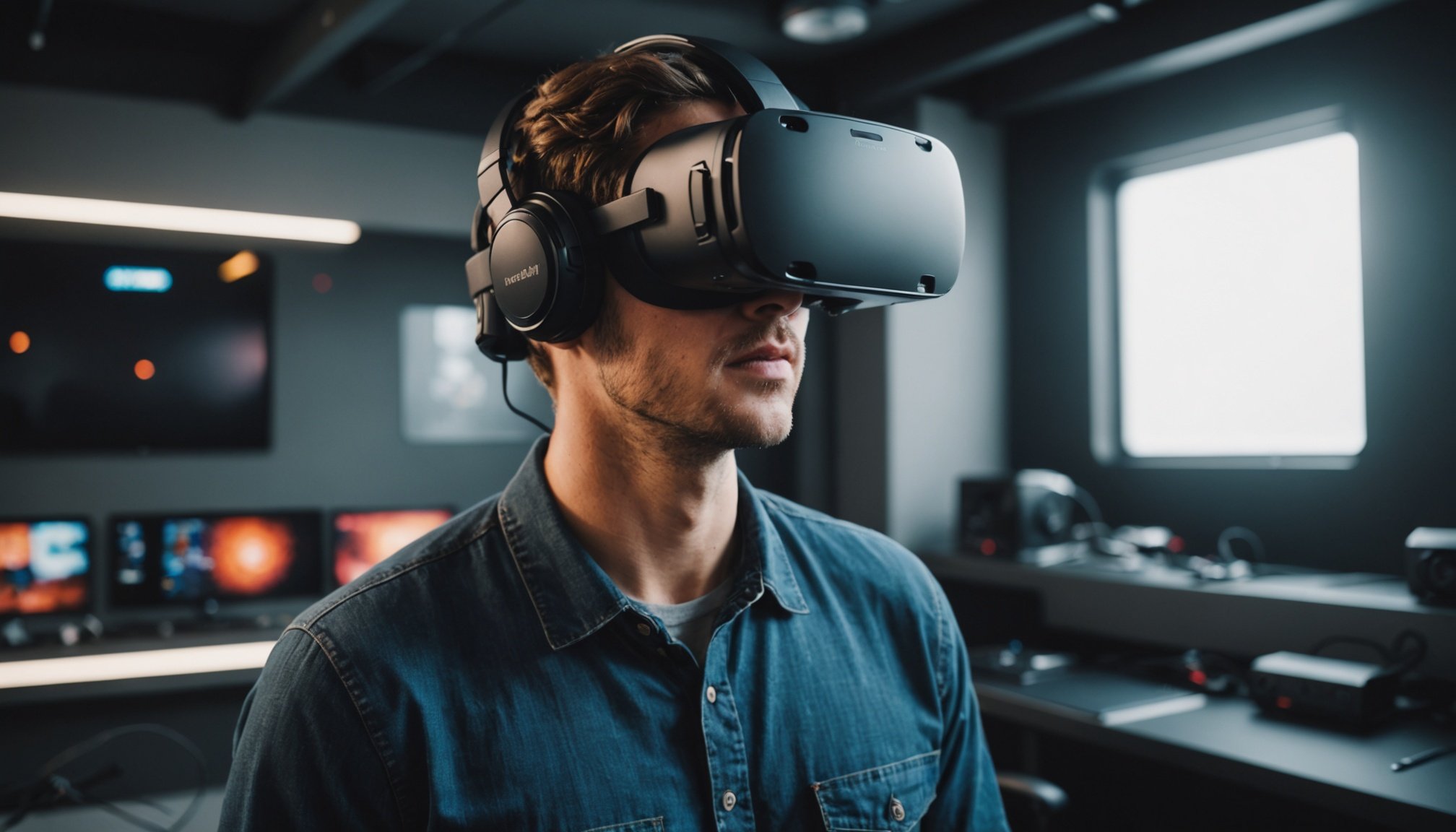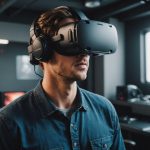Understanding Mode Transitions in VR
Mode transitions in Virtual Reality (VR) are pivotal for creating an immersive and engaging experience. A fluid transition between different modes or scenes keeps the user engaged and reduces the cognitive load, thereby enhancing the overall user experience. Different types of mode transitions exist, including visual, spatial, and auditory transitions, each playing a crucial role in maintaining a seamless user interaction.
The psychological effects of these transitions are significant; they can either enhance or disrupt immersion. An abrupt or poorly executed transition can shatter the illusion of reality, pulling users out of the VR experience and potentially causing discomfort or disorientation. On the other hand, well-designed transitions incorporate consistency and flow, making the experience natural and intuitive. Developers must be acutely aware of these elements while designing VR experiences.
Also to read : Transforming Underwater Exploration: Leveraging AI for Unmatched Realism in Dive Simulations
To excel in VR development, it’s crucial to understand how transitions can impact user perception and engagement. By focusing on creating a consistent flow and leveraging user feedback, developers can craft experiences that not only captivate but also compel users to explore further. Adopting innovative transition strategies will ensure that VR applications remain at the forefront of immersive technology.
Best Practices for Implementing Seamless Transitions
Creating seamless transitions in VR design is essential for achieving an engaging user experience. Developers can employ transition techniques such as fade effects, motion matching, and clever use of lighting to ensure smooth visual changes. These techniques help bridge the gap between different VR environments, maintaining immersion and continuity.
Have you seen this : Transforming Mobile Gaming Experiences: How AI-Driven Analytics Shape Tailored Player Journeys
Consistency is crucial for user interaction and design. A predictable pattern helps users acclimate to the VR environment, making transitions feel natural rather than jarring. For example, maintaining the same transition duration across scenes can create a rhythmic flow, keeping users anchored within the experience.
Incorporating feedback mechanisms is another best practice to enhance the user experience. Allow users to provide input on their experience, which can be in the form of real-time feedback or post-experience surveys. This data can be instrumental in refining transition techniques, ensuring they align with user expectations and preferences.
Utilizing audio cues during transitions can also significantly impact the user’s perception of smoothness. Sound can subtly guide users between modes, reinforcing visual cues and creating a harmonious shift between environments. Implementing these best practices in VR design will not only enrich the virtual experience but also encourage users to immerse themselves deeper into the interactive realm.
Technical Strategies and Tools for Developers
In the VR development landscape, utilizing the right development tools and frameworks is essential for crafting seamless transitions. Selecting an appropriate VR framework can significantly impact a developer’s ability to integrate smooth mode transitions. Popular frameworks such as Unity and Unreal Engine offer robust features and plugins specifically designed for VR design.
When it comes to coding techniques, emphasizing clean and efficient code is critical. Developers should prioritize optimizing transition sequences to minimize latency and ensure fluidity. Implementing delta time in animations can manage frame rates effectively, enhancing the user experience even during intricate transitions.
Integrating third-party tools can further bolster performance. For instance, tools like VRTK (VR Toolkit) offer predefined solutions for common VR challenges, streamlining the development of mode transitions. Using these tools, developers can focus on crafting unique user experiences rather than reinventing the wheel.
Reviewing successful case studies showcases the immense potential of the right tools and strategies. By analyzing projects where tool integrations have excelled, developers can glean insights on optimizing transition techniques, ensuring their VR applications stand out in an increasingly competitive market.
Common Challenges in Mode Transitions and Solutions
Mode transitions in VR can present numerous challenges, particularly when aiming to maintain a seamless user experience. Among the most common issues are performance hiccups that disrupt immersion. Laggy transitions or mismatched cues can detract from the intended experience, jolting users out of the virtual environment. To mitigate these challenges, developers should focus on optimizing resource allocation and efficiently managing assets to smooth out transitions.
Identifying pitfalls in mode transitions is crucial for VR development. Poorly executed transitions may happen due to mismatches between visual, auditory, and spatial elements. These inconsistencies can confuse users and break the reality of the virtual world. Employing consistent transition techniques across different modes can alleviate this issue.
Incorporating user feedback is essential in troubleshooting transition problems. Real-time feedback mechanisms can help capture issues as they occur, offering instant insights into user hurdles. Understanding how users perceive and interact with transitions provides a basis for continuous improvement in VR design.
Therefore, fostering an iterative feedback loop, where development is informed by ongoing user insights, is invaluable for refining transitional elements and enhancing overall user satisfaction. Employing these strategies allows developers to address potential issues proactively, ensuring a smooth and engaging VR experience.
Practical Examples and Case Studies
Examining real-world applications reveals valuable insights into successful VR mode transitions. In particular, case studies highlight how innovative approaches can lead to enhanced user experiences. One notable example is the VR application “Tilt Brush” by Google. It excels through seamless auditory and visual transitions that keep users fully immersed while navigating various 3D environments. By maintaining consistency in design and integrating subtle audio cues, the application ensures a fluid experience even during complex transitions.
Lessons from less successful VR projects emphasize the significance of aligning visual, spatial, and auditory elements. Projects like “Land’s End” struggled with abrupt transitions that left users disoriented, underscoring the necessity for cohesive integration in VR development.
Developing a prototype based on these best practices can benefit from an initial test environment emphasizing simplicity and clarity. Key actions such as ensuring uniformity in transition techniques will fortify the immersion and encourage user exploration. These case studies thus provide concrete guidance for developers aiming to produce compelling and immersive VR applications. By adapting successful techniques and steering clear of common pitfalls, the next generation of VR experiences can achieve even greater engagement and satisfaction.
Future Trends in VR Transition Technologies
The landscape of VR development is rapidly evolving, with exciting innovations aimed at perfecting mode transitions. Among these advancements, the integration of artificial intelligence (AI) and machine learning stands out. These technologies promise to create more dynamic and responsive virtual environments by adjusting transitions based on user behavior and preferences, enhancing the user experience significantly.
Another promising trend is the evolution of user interfaces. As interfaces become more intuitive and immersive, they leverage gesture-based controls and haptic feedback to create a natural interaction paradigm. This evolution supports more seamless and intuitive mode transitions, reducing barriers to engagement and allowing users to delve deeper into immersive experiences.
Developers aiming to stay ahead should focus on these emerging trends. Embracing tools and platforms supporting AI-driven analytics will be crucial. Moreover, investing time in understanding gesture-recognition technologies will prepare developers to craft future-forward VR applications that maintain engagement through seamless transitions.
To capitalize on these advancements, developers must stay informed and adaptively revise their techniques, ensuring they meet changing user expectations and technological capabilities. By doing so, the next generation of VR experiences will not only be captivating but also deeply responsive and personalized.










